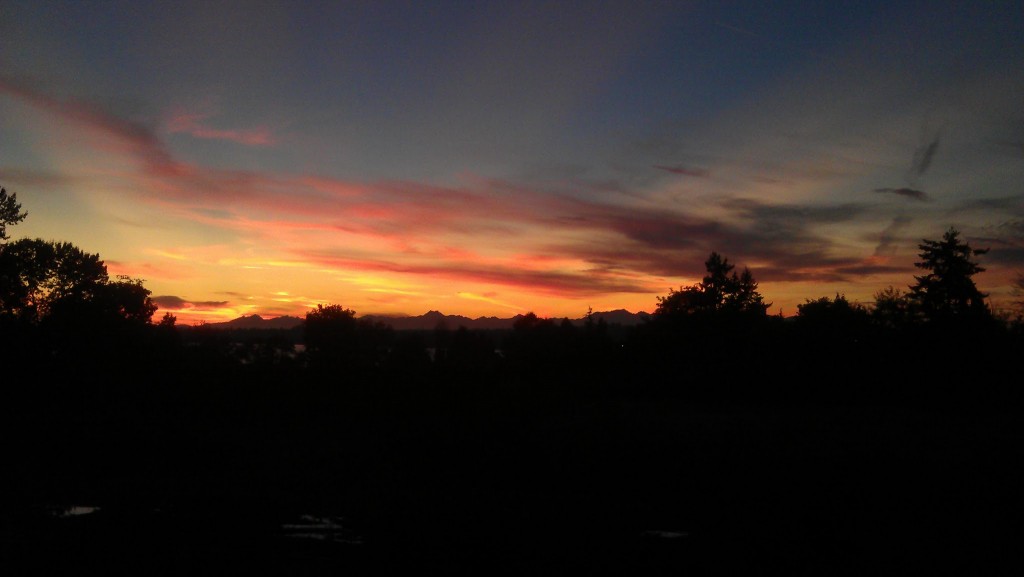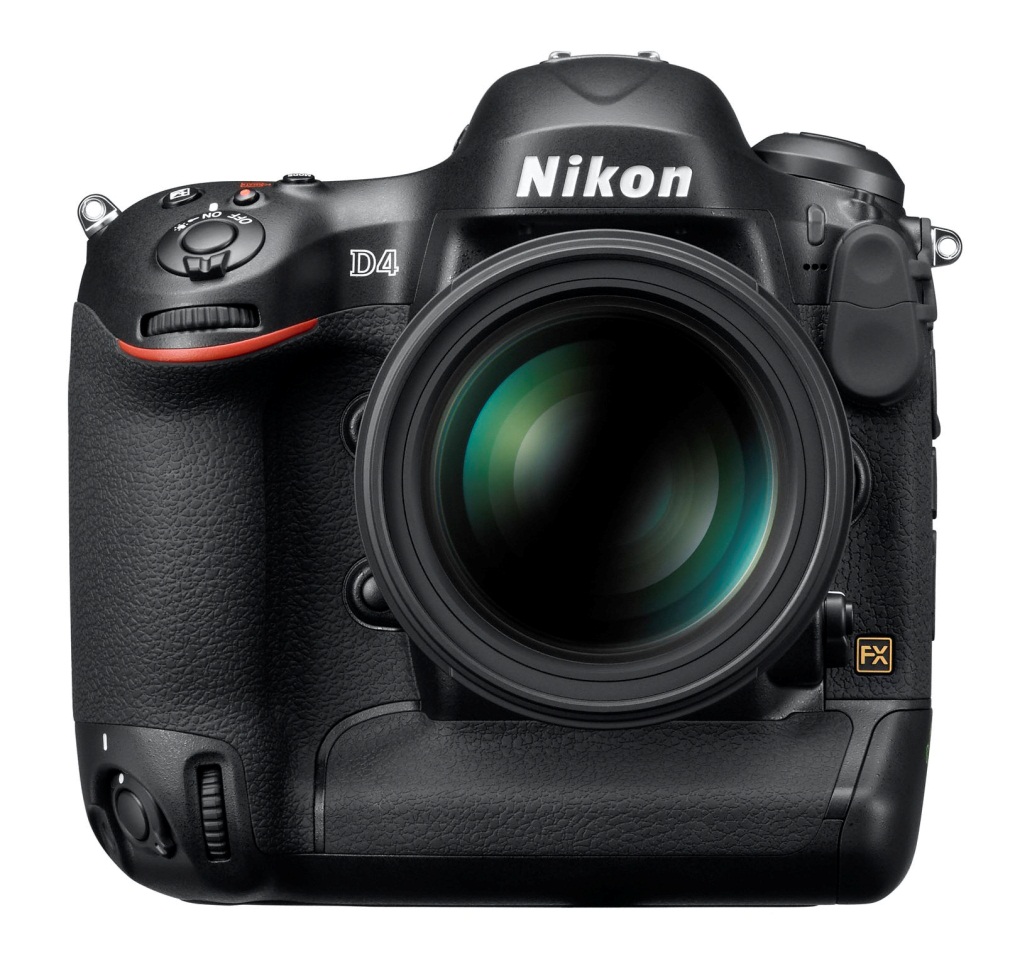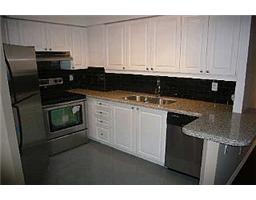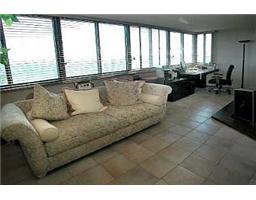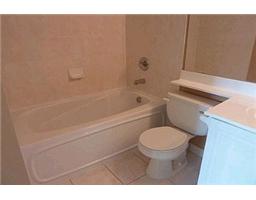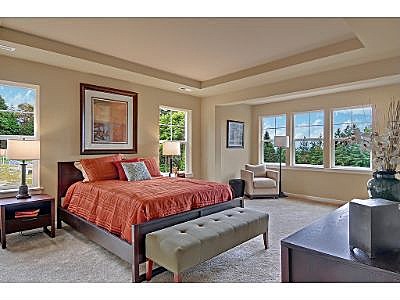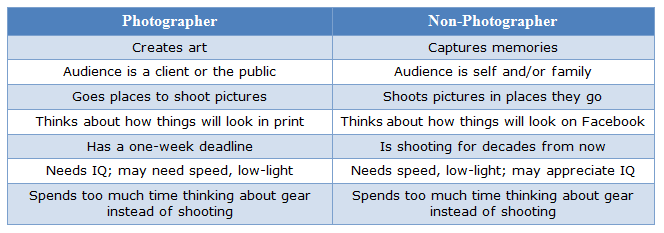Photography
-
The best camera you have with you
A phrase you’ll hear mentioned from time to time is “the best camera is the one you have with you”. The point of the phrase is that it’ll do you no good to get the D4 I mentioned in the last post if you don’t carry it around with you all the time. Since there isn’t a smartphone without a camera built-in anymore, we’re now at a point where you almost always have at least one camera with you. But sometimes, it’s been fortunate that I’ve had more than one. Like back in October, when there was a nice sunset at about 6:40pm, as I was leaving the Google offices. I took a picture with my HTC Sensation:
While there are worse cameraphone images, I was pretty disappointed. The sunset looked much nicer than the above, and you didn’t have to look too closely to see lots of noise in the image. Fortunately, the best camera I had with me wasn’t the one that was built into the HTC Sensation; I was carrying the PowerShot S90 (about 1.5 years older than the HTC Sensation). I felt it captured the sunset a little better:
Zoomed in a little, something you still largely can’t do optically on smartphone cameras:
I mentioned in looking at the statistics of which cameras/lenses I actually use, that I barely use the S90, and this is true. But because I have it much of the time, it’s still handy when I don’t have a DSLR nearby (which I never do when walking to/from work).
I read recently that sales of compact cameras in 2011 were significantly lower than 2010, as a result of the growing ubiquity of smartphones. It’s a shame that many people might not fully realize what they’re giving up when going to the cameras built into their phones, even in comparison to a compact camera. As I mentioned in a post when I was still kicking myself for not having my DSLR when we ran into Kim Clijsters, the difference in output between classes of camera (phone, compact, 4/3rds or APS-C, and 35mm) is still huge. With even a consumer-grade D5100 or D7000 in the above situation, there’d even have been enough dynamic range in the picture to bring out some foreground detail (if you want it), like this shot in much less interesting conditions in Vancouver:
I’m not that fond of the above photo, but I’m nevertheless amazed that it’s possible to capture the sun and details in the trees (you’ll need to click for the larger version to actually see the detail, probably) in a single frame with no HDR tricks applied. Unfortunately it seems like it will still take at least 5-10 years (given that APS-C overall performance is just now approaching the first full-frame D3 from over 4 years ago, and that the sensor size drop going to a compact is much bigger) before compacts reach what APS-C sensors can today.
-
Time to go full frame?
Nikon announced the D4 last last week, a $6,000 successor to the Nikon D3s:
The image is Nikon’s, and links to their blog post announcing the D4. It’s a 16.2MP camera, only a little more than the D3S, and essentially the same as the D7000 (which is what I use, and is the latest model in Nikon’s line of cameras that use smaller DX sensors). It’s marquee features are awesome low light performance, better video than any prior Nikon camera, and very fast shooting and auto-focus.
According to NikonRumors.net (which was spot on with the D4 prediction), the replacement for the less (but still) expensive full-frame D700 is also forthcoming. They say it’s named the D800, and will be a whopping 36MP – though significantly slower in terms of shooting speed than the D4 as a result of this. It will probably have a body that’s more like the D700, which is to say, much smaller than the monstrous D4 (which appears to be similar in size to the D3 that I used for a few months). Is one of these for me?
-
25 Megapixels
Do more megapixels really matter? Camera manufacturers seem to think so, with the Sony NEX-7 pushing things up to 24MP and Nikon’s forthcoming D800 rumored to have a whopping 36MP. Well, I now have a 25MP photo in my collection:
I always link images to SmugMug’s X3 size, which is pretty big, but well short of 25MP. If you want to see every last pixel, this link is the full sized JPEG. Now, I like this picture independently of any of the technology behind it, simply because in all our thousands of photos we have very few that are of all four of us, which isn’t surprising given that someone has to hold the camera (especially since my camera is configured in a weird way that makes it hard to hand over to someone). So, what was this picture shot with?
-
If a picture is worth a thousand words…
… then you’d think that you’d try and have a half-decent set of pictures when selling what’s likely the biggest asset that you own.
In general, I think that U.S. real estate agents have figured this out. Most of the houses we looked at had been professionally photographed, some so well that they looked much better online (and in print) then in reality. Indeed, since we had one weekend to make a home purchase decision, those photos had largely been the basis for deciding what to see and what to skip (our agent helped a lot too).
By contrast, it doesn’t seem to have dawned on Canadian real estate brokers that this is actually important. Our broker walked around for 5 minutes with a point and shoot, getting some basic shots of each room. Even the Canada/Toronto MLS system offers pitifully low resolution pictures. Sure, some high end properties will have a decent set of photos taken, but this is typical:
These are just examples pulled off the MLS; there are plenty that are even worse (some bathroom shots have a full reflection of the agent in them, snapping a picture). In any case, watching our agent do things, I quickly offered to take some pictures myself and send them to him later in the day. Now, I don’t know the first thing about real estate photography, but even attention to the most basic of details produced something a little better:
My shots are far from professional, but even obscured by these ridiculously small image sizes (you can click to enlarge mine), I think that there’s at least some visible differences! I was already of the impression that real estate commissions are disproportionately large in comparison to the value added (much of which, especially on the selling side, is just access to a closed, limited database). The fact that this part of the selling process was apparently just worth 5 minutes of the agent’s time certainly didn’t win me over. Fortunately, he was much better at negotiation and other aspects of the transaction than he (or any of his peers) are at photography.
By contrast, a better-than-average but not so terribly uncommon shot on Zillow.com in one of the areas we were looking at, for a mid-end home, was the following:
This shot is clearly better than anything I took in our condo, and illustrates just how much I don’t know about taking good interior architecture shots. Indeed, the only fault I find with the U.S. listings is that they tend to use a somewhat excessive (for my taste) amount of HDR, though I’ll take the output any day over my own shots… and over pretty much any of the shots I see in Canada.
Finally, it was sort of funny – since my D7000 was being repaired for oil spots on the sensor (which have since returned… grrr…), I was lugging around the full frame Nikon D3 on our home finding trip. My real estate agent commented that she used to use a D3, before switching to just having a professional come in to get shots for the listing. But at least that goes to show that when she was doing the photos herself, at least she was trying to get the best possible results!
-
The 35/1.8 still impresses
I am now officially divested of much of the extra camera equipment I’d been holding on to – the D3, 14-24, 70-200, TC-20E II teleconverter, and SB-900 flash all made the trip back to Malaysia with my step-father, a professional photographer who will get a lot more out of the equipment than I will. I’ll probably still eventually go full frame, perhaps when the D700 replacement becomes available – if it’s not too expensive/large, and offers the same benefits over my D7000 that the D700 did over the D90 back in the day.
Still, shooting with the very compact and inexpensive 35/1.8 a few weekends ago reminded me that in most conditions, you really need very little to get decent results. This is my dad, grilling up some corn on the BBQ:
Yes, it’s a pretty boring background and not especially interesting in terms of composition, but it’s not actually that easy to get a candid shot of my Dad smiling! Here’s another shot of my step-brother Tim as we get ready to leave:
If I still had the 70-200/2.8 to lug around, sure, it would have been possible to get much more background isolation and better background blurring, but for under $200, it’s hard to complain about the 35/1.8. It’s also so compact that there really isn’t a good reason for anyone with a DX camera not to have one!
I haven’t been posting much recently, as it’s been very busy trying to make sure that everything is wrapped up with my current job, as well as preparing for the upcoming move. Somehow, for every thing we get done, it seems like we’re adding two more items to the list of things that need doing. So I may not be posting too often in the next little while, even though the whole process has generated quite a few stories that I’ll try and capture here before my mind loses them forever…
-
Why lug a DSLR around?
Cameras of all sizes have been getting consistently better over the years. The $600 (including lens) entry-level D3100 takes better pictures than the original $5,000 (body-only) D1 did years ago on its introduction. Compact cameras have benefited on a similar pace, from shooting VGA photos that were at best sufficient for the web, to being indistinguishable at smaller sizes and in the right lighting conditions from much more expensive cameras. The compact camera segment itself is under significant pressure, as an increasing number of people find themselves satisfied with the picture taking capabilities of their cell phones. With all these improvements, are the differences still worth all the extra weight that each size class brings with it?
The Rogers Cup was a great place to ask this question, as the first day that we made an impromptu trip there, I didn’t bring a DSLR and only had my S90 compact camera. I’m still really glad I brought it, but how did it do in general? Here’s Kim Clijsters during her practice, at 6:38pm last Saturday:
I was right up at the edges of the court, but my S90 was still at f/4.5 and ISO 320 to get even remotely enough speed to capture the shot. We were back the next day, same court, 6:34pm – this time, it was Svetlana Kuznetsova from Russia who was practicing:
This second shot was with the D7000 at f/5.6 and ISO 450, using the 70-300 VR lens. At these small sizes, the pictures might not look too different quality wise – but click for larger versions, and you’ll see an enormous difference between the two. In addition, I was much further away with the second picture thanks to the added reach of the 70-300 (and I was only at 100mm!). Sitting for a brief period at an actual game at center court, I really needed the full reach of the 70-300:
At maximum zoom on the S90, the player pictured – Japan’s Kimiko Date-Krumm, in a match against China’s Zheng Jie – would have been six times smaller!
It goes without saying that sports, where both speed and reach are needed, are where you’d expect a DSLR to do well versus compact cameras. What’s worth emphasizing here is that it doesn’t take much equipment to get half-decent results; you could have gotten identical shots to the above with the D5100 ($800) and 70-300 VR lens ($550). You could get near-identical results with the D3100 ($600) and the 55-300 DX VR lens ($350) that pro photographer Thom Hogan posted a positive review of today. In fact, I dare say that even at my limited skill level, you’d even get basically the same results with a used D80/D200 and 70-300 non-VR, the combined used price of which is not far off what I paid for my S90 compact! Pro-level gear for sports gets very expensive, very quickly – to the tune of $5,500 if you want a 300/2.8 lens instead of the 70-300 I used – but you can still do pretty decently at your kids games for a tenth of the price (and only a little more than the price of a compact camera).
At the heart of these differences is just basic physics on the differing sensor sizes:
- The iPhone 4, which is very well-regarded and well-specified for a camera phone, has a 1/3.2″ sensor that’s roughly 4.5mm x 3.4mm = 15.3 mm^2 in total surface area.
- My PowerShot S90, generally considered to be a very competent compact, has a 1/1.7″ sensor that’s 7.6mm x 5.7mm = 43.3 mm^2 area (2.8 times larger than the iPhone 4 sensor)
- Nikon’s DX cameras, like the D5100 and D7000, have APS-C sensors that are 23.7mm x 15.7mm = 372 mm^2 area (8.6 times larger than my S90)
- Full-frame cameras like the D3 series are 36mm x 24mm = 864 mm^2 (2.3 times larger than DX cameras, and over 56 times larger than the iPhone 4 sensor!)
There’s a pretty notable difference between tiers, but the gap between a competent compact and an entry-level DSLR is by far the largest – and at the end of the day, more area means more photons can be captured. There are interchangeable lens formats like four-thirds that fall somewhat in the middle, but overall, it’s not surprising to see that results seem to be consistent with physics.
The other relevant difference not mentioned above is the lenses. The iPhone 4 has a fixed 28mm-equivalent lens. The S90 has a 28-105mm equivalent zoom range. My D7000 with the 18-200 has a 27-300mm equivalent zoom range, and the bag of three lenses I took on Sunday had a 15-450mm range (with some gaps in the middle). Of course, there are compact superzooms, and even cameraphone accessories, but you clearly give up a lot on the reach side with smaller cameras.
In the end, smaller cameras may suffice for many things, but since running kids is a big part of my agenda, I’ll still be lugging the heavier cameras around. I still just wish I had been last Saturday when we met Kim!
-
My D7000 returns!
At the end of last week, I finally got my D7000 back from Nikon, after having sent it in for servicing. In the interim, I’d been using the D3 that I was temporarily in possession of, and had started to forget just how gargantuan the D3 really is:
The D7000 is by no means a small camera – but it looks and feels tiny in comparison to the D3. It’s amazing what you can get used to; if we think of the size of a Walkman now versus an iPod Touch (let alone an iPod Nano), it seems huge – but the size never bothered us at the time. That said, the D3 is simply enormous in absolute terms – if you’re trying to use it one-handed with a big lens (often necessary due to the kids), you’d best ensure your wrist is in good shape!
If you’re wondering, I took the picture above using my Canon PowerShot S90 compact camera. It actually took quite a bit of effort – there’s no good light in our home at night, and the S90 doesn’t support an external flash, so I was holding and manually firing a Nikon SB-600 in one hand, and a Nikon SB-800 in the other. I missed quite a few times :).
So why did I have to send the D7000 back, and how did Nikon do?
-
Photographers vs. Non-photographers
I’ve made a decent effort – perhaps to the point of being annoying – to be clear that I consider myself a non-photographer. Initially I used the term “amateur photographer”, but I realized that this wasn’t distinct enough – some “amateur photographers” go on international trips just to shoot pictures and hone their craft. That’s not the image I was trying to conjure up, so I switched to the term non-photographer.
I wrote a brief post some time ago titled “Amateur vs. Enthusiast vs. Pro” (before adopting non-photographer) to better state what I meant by this, but I always intended to revisit the topic and be a little clearer about the differences. I feel especially compelled to do that now, as despite lugging around the professional D3 and even some pro-oriented glass, I’m still definitively a non-photographer. What do I mean when I say this? Perhaps this table will help:
Each row in the table (except perhaps the last) requires a little elaboration, which is below…
-
Thoughts on the Nikon D3
A while ago, before Herman finally settled on a D7000, I wrote a post on the D7000 vs. D90 since I used the latter for quite some time before upgrading to the former, providing a few reasons why I thought the choice for many would come down to those two (though the D5100 wasn’t available then). I also mentioned, in talking about lens selection, that full frame just doesn’t make sense for most people, and thus not to buy lenses with the assumption of going to full frame.
Of course, all that was before buying that big batch of equipment, which temporarily put a full-frame D3 in my possession – which I’m still using for the moment. This has actually turned out to be pretty handy, because I’ve had to send my D7000 back to Nikon again due to oil spots appearing on the sensor; this is an issue that some D7000 users have encountered, and while Nikon cleaned it up the first time I sent it back, the problem has recurred. Since it can take Nikon a while to service anything (customer service is definitely not their strong suit), it’s pretty fortunate to have two bodies!
So, what’s the experience been like with the D3? In short, despite that it’s closing in on being 4 years old (which is about 80 in camera-years), it’s still a fantastic camera. It’s not all good, but here’s what I noticed most:
- What I said before about it being too big, too heavy, and too expensive is still all true. Even used, a D3 in good condition with a low shutter count is more than $3,000, and it’s monstrously large. The price tag is even higher for either of its updated siblings, the D3s and D3x. The weight is still something I can manage; it’s much lighter than either of my two kids!
- Performance wise, its 12MP full-frame sensor (same as in the D700) is still great; even after all this time, modern crop sensors like in my D7000 still can’t match it at ISO 3200 or 6400. The D3 sensor also seems to preserve highlights better. It’s just amazing that this sensor was introduced so long ago and still beats any crop sensor. If this was any other type of silicon (e.g. a CPU or GPU), it wouldn’t even be close.
- A pro lugging a bag won’t care about this, but the fact that there’s no built-in flash is somewhat inconvenient; and if you want to do off-camera flash, you need at least an SB-800 to act as a commander. I’d definitely favor the D700 even if you just want the improved sensor.
- I still like the full-frame look; I don’t know whether it’s the shallow depth of field or just the color rendition, but it seems to have the edge over the sensors in either the D90 or D7000, even when low light is not an issue.
- While my most used lens – the 24-70/2.8 – is useful for me on both full-frame and crop sensors, I like it better on the full-frame D3 than on the crop sensor D7000.
- Autofocus; see below.
Autofocus Performance
What’s actually better about the D3 than anything else I’ve ever used? Quite simply, the speed of its auto-focus (while still maintaining accuracy, I suppose):
If you click to zoom in, you’ll see that while it’s not perfectly pixel-sharp – this is an object clearly in motion, after all – the focus is really where it should be (you can see based on the non-moving grass). Usually I have to take 10 shots like the above hoping for one sharp one, or try and pre-focus and hope for the best, but the D3 really nailed things on almost every shot.
Even more remarkable, it’s not that it just locks on for the first shot, it’s able to keep things in focus even in continuous burst mode:
This is the same jump as the first picture; all I did was just hold the shutter down. I’m sure I’ll be missing this kind of speed once I switch back to the D7000 on a more permanent basis, but at least it suggests there’s still things to be improved on the consumer bodies.
Now I can understand why dedicated sports shooters might pony up the big bucks for a D3-class body; it’s not enough for me that the D3 makes sense as a primary camera, but at least I know that at least some D3 owners are definitely getting what they paid for.
Firmware Updates
Ironically, I’ve used these bigger cameras when the cameras I’ve actually owned for the long term have been in for repair. I got the D700 when sending my D90 back into Nikon (it was completely dead till they replaced a circuit board), and now I’m using the D3 exclusively while the D7000 gets cleaned again.
And just yesterday, I ran into “dead battery syndrome” with D3, in which with a perfectly good battery the camera just displays a battery warning indication and refuses to function. This post was almost a gripe about how Nikon DSLRs make great images, but seem to be lacking in reliability or quality control.
Fortunately, this D3 battery problem was corrected with new user-installable firmware (I had 1.00, 2.00 fixes the problem, and 2.02 is the latest for the D3). But I’m writing this because I ran into some real quirks installing the firmware. The D3 has two firmware files, an ‘A’ file and a ‘B’ file. The ‘A’ file installed per Nikon’s instructions; copy it to the root of a CompactFlash card, put the card in the camera, then select firmware update in the menu – simple!
The ‘B’ file didn’t work this way for me, though. The camera saw the file, gave the option of doing an update, said it was upgrading… and then dropped back to menus. No error message, no information, and no change to the ‘B’ firmware! I tried reformatting the card in the camera, reformatting it in the computer, changing batteries, changing cards – nothing worked.
Finally, I decided to try formatting the memory card in-camera and then transferring the file over USB (with the D3 connected to my PC via USB), in case something about how the file was being written by Windows 7 using my card reader was incompatible. Bingo! This actually worked, and got the ‘B’ firmware installed.
This is all pretty boring, but since I found nothing on this in my own Google searches, I’m hopeful that someone else encountering this issue might be fortunate enough to stumble upon this thanks to the magic of Internet search!
-
France and HDR, Again
Although I actually post much more often than I thought I would when creating this blog, it’s been a little while since my last post – in part, because I spent much of last week in France on a business trip to try and reduce the complexity of some of our products. Most of this trip was spent in Strasbourg, France – a city with a population of under 300,000 that sits at the easternmost point in France, very close to the German border. The thing that’s amazing about France – and about Europe in general – is that it seems like every time you turn a corner, you might just be staring into the face of an intricate, beautiful, historical building. Strasbourg is no exception to the rule; look down an alley, and you might see this:
That’s an entrance the main cathedral in Strasbourg, at 6:30am when I was walking around before the start of the meetings for the day. Being close to the summer solstice is nice; in the winter, it’s dark when you head the office and dark when you leave. Here’s another view of the same building:
In an attempt to make these posts more RSS-friendly, more thoughts and the HDR comments are after the jump… if I configured WordPress correctly.
